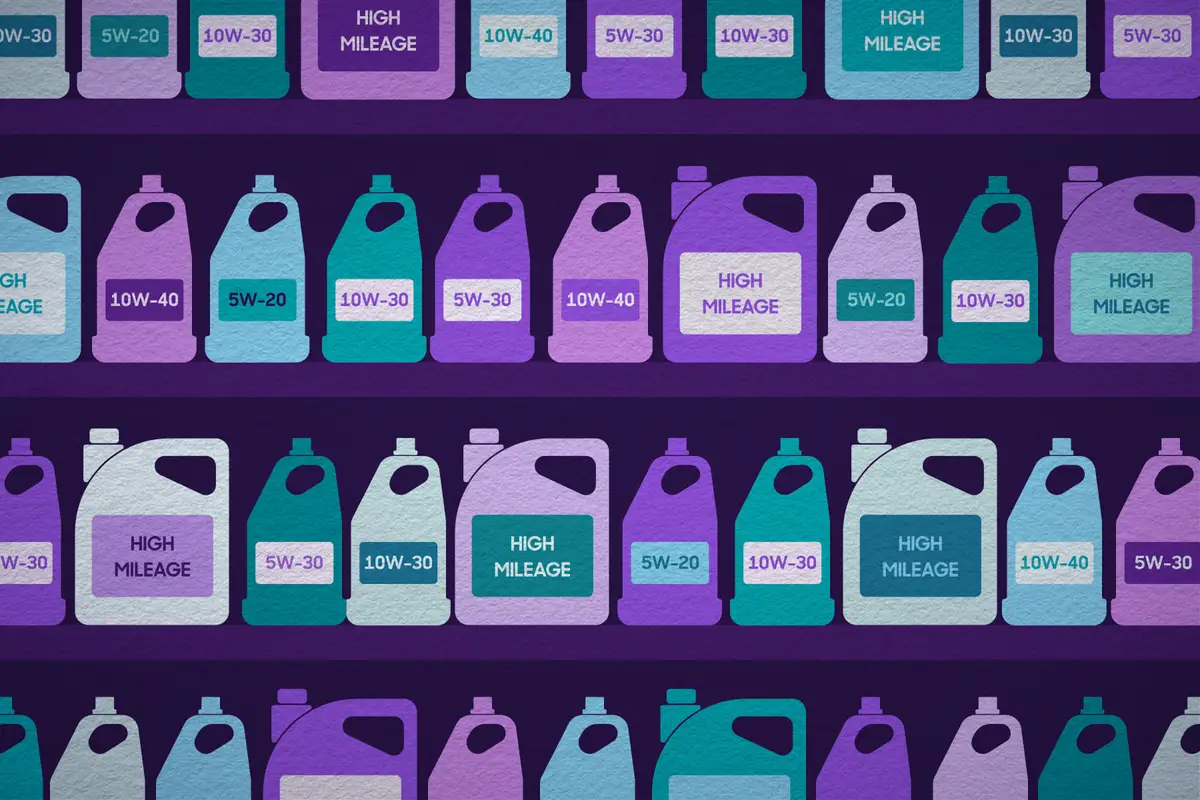Is Oil for High-Mileage Engines Worth Buying?

Key Points
- High-mileage oil is typically used for engines with at least 75,000 miles and can include additives to help reduce wear, corrosion and leaks.
- With a newer vehicle, you should stick with the manufacturer’s recommended oil and only switch to high-mileage oil if an engine is showing signs of wear or leaks, as using it unnecessarily can lead to seal issues and added cost.
Although some brands charge slightly more for their high-mileage oil than regular oil, other brands may not. Either way, it’s still worth asking what benefits high-mileage oil typically brings and, considering those benefits, whether it makes sense to use it in all engines regardless of mileage.
Related: How Much Oil Consumption Is ‘Normal’?
When to Use High-Mileage Oil
- Key takeaway: High-mileage oils are typically used for engines with 75,000 miles or more and can help with cleaning the engine, as well as preventing wear, corrosion, sludge, rust and leaks.
Typically, labeling on high-mileage oil states that it’s formulated for engines with more than 75,000 miles on them. Labeling also usually lists benefits of that oil, which may include additional wear and corrosion inhibitors, added detergents to keep the inside of the engine clean and seal conditioners to reduce leaks. Note that not all brands include the last in their list of benefits, so if that’s of importance to you, be sure to read the labels.
Sludge and rust can build up in an engine over time, and many high-mileage oils claim to help clean those out. By the same token, leaks often occur in rubber gaskets and seals as they age. If the oil is labeled as including a seal conditioner (wording varies, but the words “[stop/treat/prevent] leaks,” “seals” or “gaskets” are usually mentioned), it typically has an additive that is intended to swell the seals a bit and make them more pliable to tighten up tolerances and reduce leakage.
Common rubberlike seals that grow old and can leak include:
- Crankshaft main-bearing seals (found at each end of the crankshaft)
- Valve-cover gaskets (at the top of the engine)
- Valve-guide umbrella seals (internal parts covered by the valve cover)
The first two can allow external leaks that leave oil streaks on the engine, which are often hard to see in today’s packed engine compartments, or spots on the floor beneath the car, which may be hard to detect if you don’t park in the same place all of the time. To detect the latter, you can place a large piece of cardboard under the engine overnight. In addition, a leaking umbrella seal can allow excess oil to leak past the valve guide and get into the cylinder where it’s burned, which can produce blue-tinted exhaust smoke. Unfortunately, unless it’s really bad and you see a cloud of blue smoke in the rearview mirror, you may not know this is happening without having someone follow you down the road.
A telltale sign of any of the above issues is a decreased oil level between oil changes. A manufacturer may claim that some oil usage between changes is normal, but how much is not typically listed in the owner’s manual. However, a good rule of thumb is using a quart or less over 6,000 miles means you likely don’t have a problem. Checking your oil level at least once between changes (and you’d ideally do it more often than that) will alert you if you’re using more than usual.
Read More Car Maintenance Tips:
- What Fluids Should I Top Off?
- Why Does My Car Squeal When I Turn the Steering Wheel?
- Do You Need to Change Your Car’s Power-Steering Fluid?
- If Premium Gas Is Recommended for My Car, Will Using Regular Void the Warranty, Ruin the Engine?
Why Not Use High-Mileage Oil in All Engines?
- Key takeaway: With a new vehicle, you may never need to use high-mileage oil if you get regular oil changes using the automaker’s recommended oil. High-mileage oil may also add unnecessary cost and can add to wear on engine seals.
Automakers recommend a particular oil for your engine based on extensive testing, and when your car is newer, that’s what you should use. With regular oil changes and decent care, you may never have to use anything else — including high-mileage oil.
A possible downside to using high-mileage oil in a car that doesn’t need it has to do with the seal-swelling capability. One theory is that if you swell and soften seals that aren’t leaking, you could tighten carefully calculated clearances and cause added wear to those seals. And since you’ve already swelled them once, you may not be able to swell them further to lessen the leak.
You may also waste money by buying more expensive oil. Depending on where you buy the oil and what brand and type you buy (conventional, synthetic blend or pure synthetic), you may pay approximately 50 cents more per quart, which means around $3 extra for a 6-quart oil change. That’s not a lot, but saving every little bit helps.
Perhaps the old adage “If it ain’t broke, don’t fix it” applies here. While the promises on high-mileage oil sound attractive, you should use the oil recommended by the manufacturer at least through the engine warranty, then switch to high-mileage oil only if given a good reason as outlined above.
Related Video:
Cars.com’s Editorial department is your source for automotive news and reviews. In line with Cars.com’s long-standing ethics policy, editors and reviewers don’t accept gifts or free trips from automakers. The Editorial department is independent of Cars.com’s advertising, sales and sponsored content departments.
Featured stories



